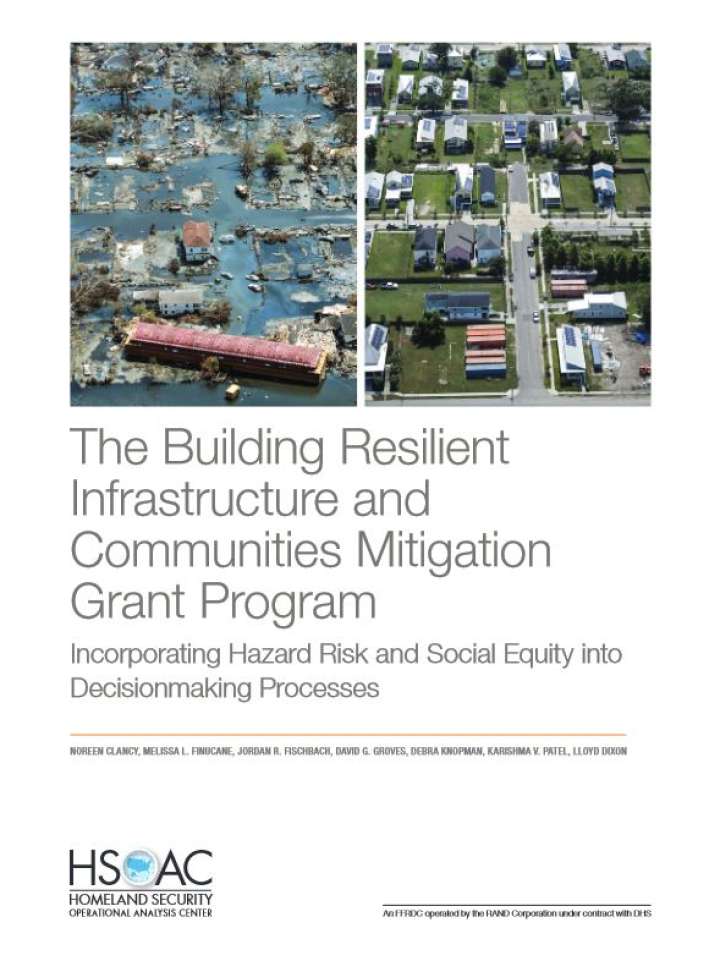The Building Resilient Infrastructure and Communities mitigation grant program: Incorporating hazard risk and social equity into decision making processes
This report identifies ways for the Building Resilient Infrastructure and Communities (BRIC) program to develop a multihazard, forward-looking, risk-based approach to mitigation that also incorporates issues of equity and community well-being in its application and evaluation processes. Much of the disruption and damage caused by these disasters could have been reduced through mitigation — that is, predisaster actions known to reduce damage and ease recovery. The Building Resilient Infrastructure and Communities (BRIC) grant award program is intended to help communities undertake this mitigation. Authorized by Congress in 2018 and administered by the Federal Emergency Management Agency (FEMA), the program includes equity considerations alongside risk reduction, which represents a significant break with past policy and practice and foreshadows a new approach to building community resilience.
The key findings of this report include:
- No single risk assessment tool is both quantitative and qualitative; has comprehensive and consistent data coverage in terms of hazards, geographic extent, and spatial scale; is transparent and accessible; and considers future and cascading risks, including to lifeline infrastructure.
- The majority of risk assessment tools are focused on asset damage as the key outcome metric.
- Current priorities do not reflect social systems or resources as essential parts of effective mitigation.
- Comprehensive equity assessments are constrained by data limitations, as well as by a lack of clearly defined goals, mechanisms, target audiences, and metrics.
- Benefit–cost and risk analyses are currently biased toward wealthy communities, while underserved populations face challenges meeting BRIC criteria.
- An application evaluation tool can help determine which priorities BRIC addresses and which it omits.
